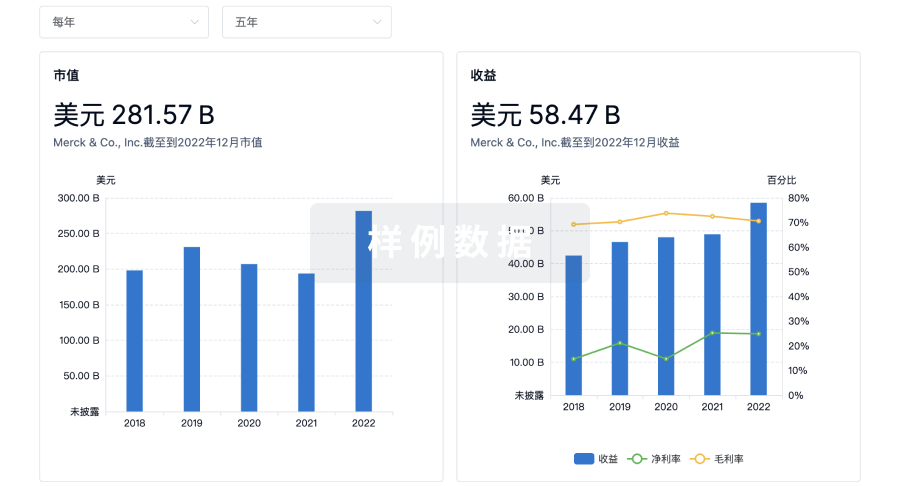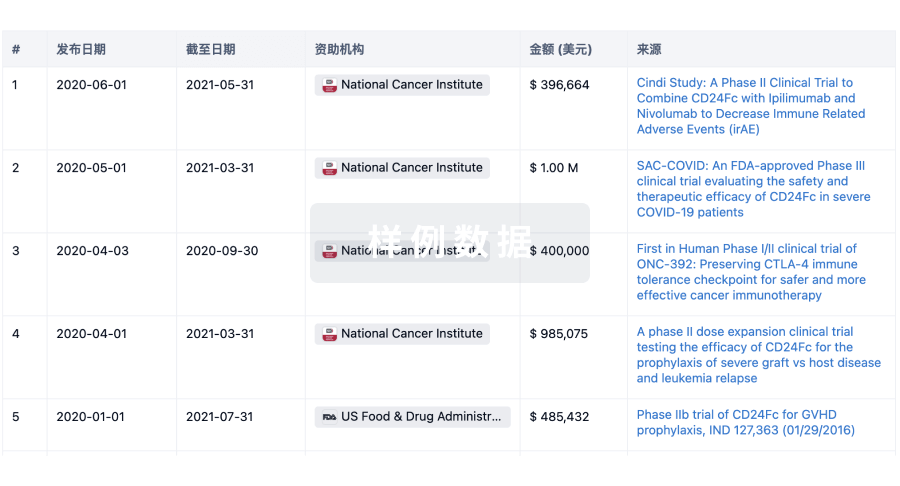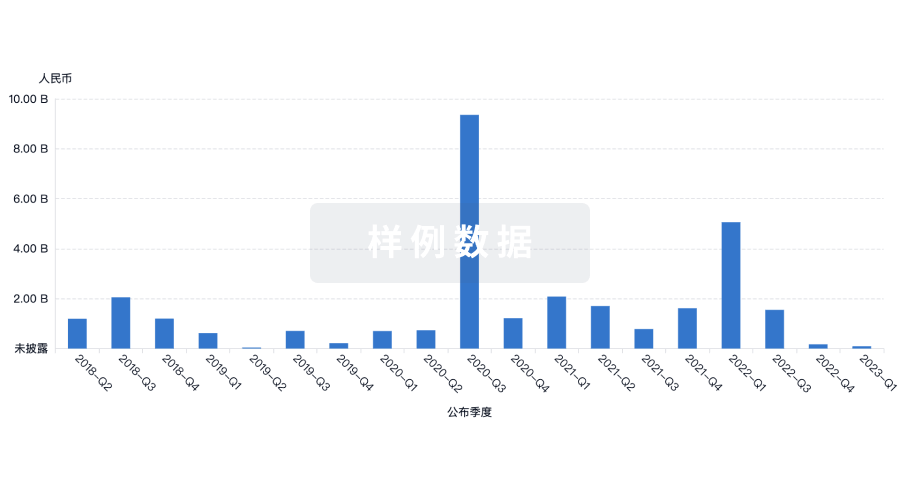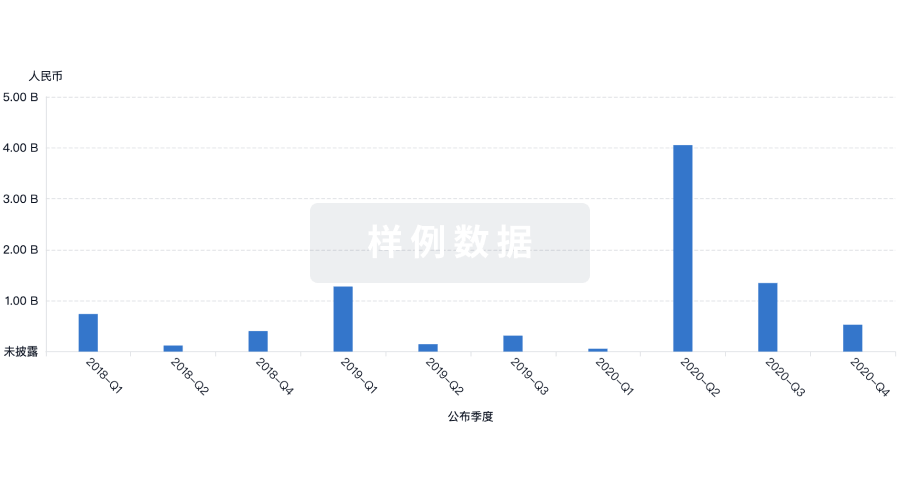预约演示
更新于:2025-07-06

Liaoning Normal University
更新于:2025-07-06
概览
标签
感染
其他疾病
呼吸系统疾病
小分子化药
合成多肽
疾病领域得分
一眼洞穿机构专注的疾病领域
暂无数据
技术平台
公司药物应用最多的技术
暂无数据
靶点
公司最常开发的靶点
暂无数据
| 排名前五的药物类型 | 数量 |
|---|---|
| 小分子化药 | 6 |
| 合成多肽 | 2 |
关联
8
项与 辽宁师范大学 相关的药物100 项与 辽宁师范大学 相关的临床结果
登录后查看更多信息
0 项与 辽宁师范大学 相关的专利(医药)
登录后查看更多信息
6,561
项与 辽宁师范大学 相关的文献(医药)2025-12-01·MOLECULAR BIOLOGY REPORTS
GABA mitigates mitochondrial apoptosis induced by high temperature stress in the Pacific oyster (Crassostrea gigas)
Article
作者: Gao, Lei ; Liu, Ranyang ; Song, Linsheng ; Li, Qingsong ; Zhang, Ziyang ; Zhang, Xueshu ; Wang, Lingling ; Xing, Zhen
BACKGROUND:
High temperature is a critical environmental factor leading to mass mortality in oyster aquaculture in China. Recent advancements highlight the physiological regulation function of γ-aminobutyric acid (GABA) in the adaptation of environmental stress.
METHODS AND RESULTS:
This study examined the physiological responses of the Pacific oyster (Crassostrea gigas) upon high temperature exposure, focusing on the histopathological changes in gill, the GABA concentration, the mRNA expression and activities of apoptosis-related genes. Following 24 h of exposure to seawater at 28 °C, notable histopathological changes, including cellular swelling and vacuolization, along with an increase in TUNEL-positive cells were observed in the oyster gill, compared to the control group maintained at 18 °C. Moreover, there was a significant increase in CgCaspase-3 transcripts, Caspase-3 and Caspase-9 activities in the gills, glutamate decarboxylase CgGAD transcripts in the haemocytes, and GABA concentrations in the haemolymph supernatant. Intervention with GABA markedly ameliorated these responses, including reducing the mRNA expression levels of CgBax, CgBak, CgCaspase-3, and CgCaspase-9, as well as the activities of Caspase-3/9. Furthermore, after the treatment with GABAA and GABAB receptor antagonists, the activities and expression levels of Caspase-3 and Caspase-9 significantly up-regulated under hightemperature stress. GABA treatment also significantly diminished the increased Caspase-3 activity by mitochondrial pathway apoptosis inducers.
CONCLUSIONS:
High temperature induced mitochondrial pathway apoptosis via increased caspase activities. The transcripts of CgGAD in haemocytes and GABA concentration in hemolymph supernatant also increased after high-temperature stress. GABA countered these effects through the activation of GABAA and GABAB receptors, reducing both caspase activity and expression of apoptosis-related genes.
2025-11-01·FOOD CHEMISTRY
A novel ESIPT fluorescent probe based on 1,3,4-thiadiazole and coumarin for sequential detection of Cu2+ and H2S and its application in food samples
Article
作者: Wang, Zihan ; Zhao, Minghao ; Ma, Ruyi ; Lü, Chengwei ; Wang, Yongchen
Here, 2-(2-hydroxy phenyl)-1,3,4-thiadiazole was used as fluorophore with ESIPT effect and a new fluorescent probe for sequential detection of Cu2+ and H2S in food, environment and biological imaging was rationally designed and synthesized by the arrival of coumarin. The effects of molecular structure modification on ESIPT characteristic were investigated thoroughly. Identification mechanism, especially the recognition site was discussed in detail with the help of DFT calculations, 1H NMR titration and HRMS analysis. Based on the settling effect of H2S on Cu2+, significant "on-off-on" fluorescence change was obtained and sequential detection of Cu2+ and H2S was achieved. The detection limits for sequential detection of Cu2+ and H2S were as low as 78.0 nM and 52.2 nM. In view of the good performance, probe was successfully applied to precise quantitative detection of target substances in foodstuff such as actual water samples, traditional Chinese medicine, red wine and fruits.
2025-11-01·BIOMATERIALS
Significantly enhanced capture efficiency of cell-imprinted material for circulating tumor cells via a flexible and ultra-strong double-armed phenylboronic acid design
Article
作者: Xiong, Yuting ; Chang, Yongxin ; Chen, Jinghua ; Tang, Mingliang ; Qing, Guangyan ; Wang, Hao ; Meng, Lingkai ; Zhao, Xinjia ; Li, Jiaqi ; Sun, Wenjing ; Zhao, Xinmiao
Circulating tumor cells (CTC) have been incontrovertibly regarded as a critically essential detection tool within the realm of cancer combat, being decidedly preferred by oncology clinicians and serving as the preponderant primary targets for single-cell analysis. However, several challenges hinder the effective capture of CTC from blood, including their rarity, heterogeneity across cancer types, the complexity of the blood environment, and potential damage to cell viability. Here we design a flexible double-armed phenylboric acid (DPBA) that targets double-branched sialylated glycans (SGs) on the surface of liver CTC. The binding affinity of DPBA (200 nM) is 33 times greater than that of typical phenylboric acid, as confirmed by glycoproteomics analysis demonstrating a strong prevalence for SGs. By copolymerization of DPBA with polyethylene glycol dimethacrylate (PEGDMA), using SMMC-7721 cells as templates, we developed a cell-imprinted hydrogel featuring compact polymeric networks interconnected by both chemical crosslinking and hydrogen bonding. This hydrogel exhibits an ultra-low swelling capacity of 5 %, effectively preserving the nano- and micro-morphologies of cell imprinting. It also demonstrates low protein adhesion, appropriate elasticity and reversibility, as well as satisfactory blood and cell compatibility. The high affinity for double-branched SGs and clear cell imprinting endow the material with precise capture efficiency for CTC, enabling accurate discrimination between liver cancer patients and healthy individuals, with an excellent area under the curve (AUC) of 0.99 and a high classification accuracy of 96 %. Importantly, the captured CTC could be released alive for genomics analysis. The material costs just 1.98 dollars per sample, which is only 1/200th of the typical medical price. This study highlights the significant potential of flexible double-armed molecular design in the development of CTC capture materials, which will promote downstream single-cell multi-proteomics analysis and facilitate early cancer diagnostics.
6
项与 辽宁师范大学 相关的新闻(医药)2024-11-25
·生物世界
撰文丨王聪
编辑丨王多鱼
排版丨水成文
胃癌(gastric cancer,GC)是全球第五大常见恶性肿瘤,也是癌症相关死亡的第三大原因。由于缺乏明显且特异的症状,大多数胃癌患者在确诊时已是晚期,导致患者预后差。
5-氟尿嘧啶(5-FU)联合铂类药物是晚期胃癌的一线化疗方案。然而,耐药的发生发展是胃癌临床治疗的主要障碍,并导致不良预后。因此,探索5-氟尿嘧啶(5-FU)耐药的机制和治疗新靶点,有助于提高胃癌患者的总生存期。
中山大学第一附属医院何伟玲、广州大学生命科学学院王雄军、辽宁师范大学李国辉等在 Science 子刊 Science Translational Medicine 上发表了题为:NIT2 dampens BRD1 phase separation and restrains oxidative phosphorylation to enhance chemosensitivity in gastric cancer 的研究论文,该论文被选为当期封面论文。
该研究表明NIT2的低表达通过增加氧化磷酸化(OXPHOS)促进胃癌的5-氟尿嘧啶(5-FU)化疗耐药的发生,而且其作用机制不依赖于NIT2的腈水解酶功能。使用二甲双胍作为氧化磷酸化抑制剂,增加了5-FU对低表达NIT2的患者来源的异种移植模型(PDX)的治疗效果。这些结果揭示了NIT2在逆转5-FU化疗耐药中的潜在作用,提示NIT2可能是5-FU治疗胃癌反应的潜在指标。
封面显示了一张热图,表明在NIT2敲除后,通过ATAC测序,人胃腺癌细胞系的染色质可及性增加(蓝色与红色相比)。
细胞代谢重编程导致肿瘤进展和化疗耐药。许多研究揭示了线粒体氧化代谢对抗癌耐药性的作用。对线粒体能量代谢的依赖性增加,尤其是氧化磷酸化(OXPHOS),是许多肿瘤(例如结肠癌、黑色素瘤和乳腺癌)耐药细胞的一个显著特征。还有研究显示,
在治疗耐药的癌基因依赖性癌症(例如BRAF突变型黑色素瘤)中,代谢重编程指向氧化磷酸化(OXPHOS)驱动的代谢。然而,OXPHOS在胃癌耐药尤其是5-FU耐药性中的作用和机制尚不清楚。
NIT2属于腈水解酶(Nitrilase)超家族成员,含有保守的腈水解酶结构域,是一种ω-酰胺酶,据报道,NIT2是一种潜在的肿瘤抑制因子,可诱导细胞周期停滞。
在这项最新研究中,研究团队使用CRISPR-Cas9基因编辑确定了NIT2可逆转化疗耐药,而不依赖于其代谢功能。NIT2的缺失或低表达导致胃癌细胞系、患者来源的胃癌类器官以及异种移植肿瘤对5-FU耐药。
从机制上来说,NIT2与BRD1相互作用,从而抑制HBO1介导的组蛋白H3第14位赖氨酸乙酰化(H3K14ac)和RELA靶向的氧化磷酸化(OXPHOS)基因的表达。在5-FU刺激下,Src在Y49位点磷酸化NIT2,促进了NIT2与BRD1的解离,随后与E3连接酶CCNB1IP1结合,导致NIT2自噬性降解。因此,减少的NIT2蛋白导致BRD1形成相分离并与组蛋白H3结合,同时由于抑制ING4介导的RELA泛素化而增加RELA的稳定性。
此外,NIT2的表达与H3K14ac和OXPHOS呈负相关,与胃癌患者的化疗反应和预后呈正相关。这些发现揭示了NIT2除了代谢功能外,在化疗耐药中发挥的新作用。
研究团队进一步揭示了二甲双胍(一种OXPHOS抑制剂)在逆转5-FU耐药中的潜在作用,其可增强NIT2缺失后肿瘤对5-FU的化疗敏感性。
总的来说,该研究表明NIT2的低表达通过增加氧化磷酸化(OXPHOS)促进胃癌的5-氟尿嘧啶(5-FU)化疗耐药的发生,而且其作用机制不依赖于NIT2的腈水解酶功能。使用二甲双胍作为氧化磷酸化抑制剂,增加了5-FU对低表达NIT2的患者来源的异种移植模型(PDX)的治疗效果。这些结果揭示了NIT2在逆转5-FU化疗耐药中的潜在作用,提示NIT2可能是5-FU治疗胃癌反应的潜在指标。
论文链接:
https://www-science-org.libproxy1.nus.edu.sg/doi/10.1126/scitranslmed.ado8333
设置星标,不错过精彩推文
开放转载
欢迎转发到朋友圈和微信群
微信加群
为促进前沿研究的传播和交流,我们组建了多个专业交流群,长按下方二维码,即可添加小编微信进群,由于申请人数较多,添加微信时请备注:学校/专业/姓名,如果是PI/教授,还请注明。
点在看,传递你的品味
临床1期
2024-04-16
·药明康德
肿瘤生长和迁移依赖于肿瘤血管生成和大量的生长因子,其中VEGF/VEGFR途径在肿瘤新生血管生成中起关键作用。靶向VEGF/VEGFR信号通路研发的抗肿瘤药物主要包括VEGF/VEGFR抗体类(或融合蛋白)和酪氨酸激酶抑制剂等,批准上市20周年的贝伐珠单抗当前仍然是临床一线抗肿瘤治疗药物,但根据FDA获批的原始说明书中披露的信息表明,其仍然存在包括胃肠道穿孔和瘘管形成、伤口愈合并发症和出血等不良反应。4月18日下午3点,药明康德测试事业部项目管理和申报服务部主任刘曲女士与高级项目经理郑媛媛博士将做客药明直播间,与大家分享VEGF/VEGFR信号通路机制,靶向VEGF/VEGFR抗肿瘤药物非临床及临床试验结果,并共同探究毒性背后的可能作用机制,在靶点和创新药不断更新的当下,此类经典药物的发展方向。欢迎大家的参与!注册报名 本次研讨会免费对外开放,请长按下方二维码报名,快速进入直播通道。主题:靶向VEGF/VEGFR抗肿瘤药物及安全性分析主讲人:刘曲 女士 药明康德测试事业部项目管理和申报服务部主任郑媛媛 博士 药明康德测试事业部项目管理和申报服务部高级项目经理时间:2024年4月18日,15:00 – 16:00SPEAKER PROFILE刘曲 女士刘曲女士于2007年获得华东理工大学制药工程专业硕士学位,随后从事药物合成、药品注册和临床前项目管理工作。2018年4月加入药明康德测试事业部WIND一体化项目管理团队从事项目管理工作,目前已管理30多个IND项目,包含化学药物、分子胶、PROTAC、多肽、抗体、蛋白和基因治疗等类型。郑媛媛 博士郑媛媛博士于2017年获得辽宁师范大学细胞生物学专业博士学位,随后从事药物研发和毒理评价相关工作。2021年8月加入药明康德测试事业部WIND一体化项目管理团队从事项目管理工作,目前已管理10多个IND项目,包含化学药物、siRNA、ADC,PDC等多种分子类型药物。了解更多热门抗肿瘤靶点与毒性研究,推荐大家阅读由药明康德副总裁、首席毒理学家金毅博士领衔,集结50余位奋斗在药明康德测试事业部一线岗位的专家学者共同编撰完成的新书——《抗肿瘤药物靶点与毒性研究》。点击图片立即购买关于药明康德测试事业部项目管理和申报服务部 药明康德测试事业部项目管理和申报服务部WIND一体化赋能平台,聚焦从候选化合物到IND申报的全过程,整合药学、药理学、药性评价、毒理学和生物分析,为客户提供全球申报一体化服务。截至2022年底,WIND项目签署量超过500个,药物研发类型多样,作用靶点及治疗领域分布广泛。相关直播:药明直播间 | ALK抑制剂安全性特点探讨
抗体药物偶联物临床申请蛋白降解靶向嵌合体多肽偶联药物
2024-04-13
·同写意
肿瘤生长和迁移依赖于肿瘤血管生成和大量的生长因子,其中VEGF/VEGFR途径在肿瘤新生血管生成中起关键作用。靶向VEGF/VEGFR信号通路研发的抗肿瘤药物主要包括VEGF/VEGFR抗体类(或融合蛋白)和酪氨酸激酶抑制剂等,批准上市20周年的贝伐珠单抗当前仍然是临床一线抗肿瘤治疗药物,但根据FDA获批的原始说明书中披露的信息表明,其仍然存在包括胃肠道穿孔和瘘管形成、伤口愈合并发症和出血等不良反应。4月18日下午3点,药明康德测试事业部项目管理和申报服务部主任刘曲女士与高级项目经理郑媛媛博士将做客药明直播间,与大家分享VEGF/VEGFR信号通路机制,靶向VEGF/VEGFR抗肿瘤药物非临床及临床试验结果,并共同探究毒性背后的可能作用机制,在靶点和创新药不断更新的当下,此类经典药物的发展方向。欢迎大家的参与!注册报名 本次研讨会免费对外开放,请长按下方二维码报名,快速进入直播通道。主题:靶向VEGF/VEGFR抗肿瘤药物及安全性分析主讲人:刘曲 女士 药明康德测试事业部项目管理和申报服务部主任郑媛媛 博士 药明康德测试事业部项目管理和申报服务部高级项目经理时间:2024年4月18日,15:00 – 16:00SPEAKER PROFILE刘曲 女士刘曲女士于2007年获得华东理工大学制药工程专业硕士学位,随后从事药物合成、药品注册和临床前项目管理工作。2018年4月加入药明康德测试事业部 WIND一体化项目管理团队从事项目管理工作,目前已管理30多个IND项目,包含化学药物、分子胶、PROTAC、多肽、抗体、蛋白和基因治疗等类型。郑媛媛 博士郑媛媛博士于2017年获得辽宁师范大学细胞生物学专业博士学位,随后从事药物研发和毒理评价相关工作。2021年8月加入药明康德测试事业部 WIND一体化项目管理团队从事项目管理工作,目前已管理10多个IND项目,包含化学药物、siRNA、ADC,PDC等多种分子类型药物。关于药明康德测试事业部项目管理和申报服务部 药明康德测试事业部项目管理和申报服务部WIND一体化赋能平台,聚焦从候选化合物到IND申报的全过程,整合药学、药理学、药性评价、毒理学和生物分析,为客户提供全球申报一体化服务。截至2022年底,WIND项目签署量超过500个,药物研发类型多样,作用靶点及治疗领域分布广泛。
抗体药物偶联物临床申请多肽偶联药物蛋白降解靶向嵌合体
100 项与 辽宁师范大学 相关的药物交易
登录后查看更多信息
100 项与 辽宁师范大学 相关的转化医学
登录后查看更多信息
组织架构
使用我们的机构树数据加速您的研究。
登录
或

管线布局
2025年07月19日管线快照
管线布局中药物为当前组织机构及其子机构作为药物机构进行统计,早期临床1期并入临床1期,临床1/2期并入临床2期,临床2/3期并入临床3期
药物发现
1
7
临床前
其他
1
登录后查看更多信息
当前项目
| 药物(靶点) | 适应症 | 全球最高研发状态 |
|---|---|---|
UA-2b(Liaoning Normal University) | 大肠杆菌感染 更多 | 临床前 |
LK2(6)A(L) ( LY96 ) | 急性肺损伤 更多 | 临床前 |
OA-6b(Liaoning Normal University) | 大肠杆菌感染 更多 | 临床前 |
IS-7 ( LY96 ) | 急性肺损伤 更多 | 临床前 |
UA-6a(Liaoning Normal University) | 大肠杆菌感染 更多 | 临床前 |
登录后查看更多信息
药物交易
使用我们的药物交易数据加速您的研究。
登录
或

转化医学
使用我们的转化医学数据加速您的研究。
登录
或

营收
使用 Synapse 探索超过 36 万个组织的财务状况。
登录
或

科研基金(NIH)
访问超过 200 万项资助和基金信息,以提升您的研究之旅。
登录
或

投资
深入了解从初创企业到成熟企业的最新公司投资动态。
登录
或

融资
发掘融资趋势以验证和推进您的投资机会。
登录
或

Eureka LS:
全新生物医药AI Agent 覆盖科研全链路,让突破性发现快人一步
立即开始免费试用!
智慧芽新药情报库是智慧芽专为生命科学人士构建的基于AI的创新药情报平台,助您全方位提升您的研发与决策效率。
立即开始数据试用!
智慧芽新药库数据也通过智慧芽数据服务平台,以API或者数据包形式对外开放,助您更加充分利用智慧芽新药情报信息。
生物序列数据库
生物药研发创新
免费使用
化学结构数据库
小分子化药研发创新
免费使用